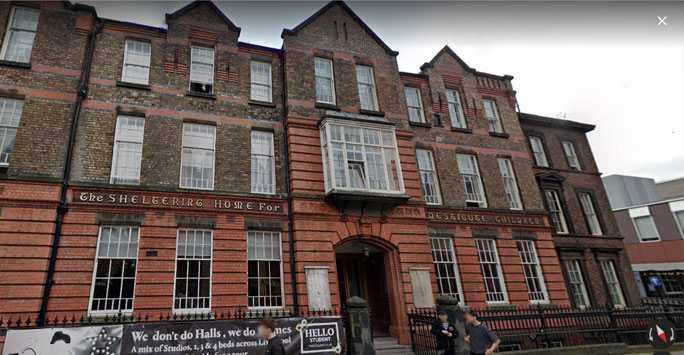British Home Children
Posted on: 2 September 2020 by Nick Jones in 2018 Posts

Learn about the 19th Century policy of child emigration and Liverpool's place in this chapter of history.
In the late nineteenth century, poverty in industrial British cities was rife; the working classes had continued to move for work, which was caused overcrowding and thus the development of infamous slum housing. These living conditions were often dark, dirty and they were thought by the middle and upper classes to be breeding grounds for criminality and vice.
These fears provide the backdrop for the advent of child emigration as a welfare policy for ‘gutter children,’ as they became known. The scheme involved the removal of ‘orphaned’ or destitute children from workhouses and the streets for their transportation to Canada. It was imagined that there they would either be adopted, or provided with food, shelter and an education in exchange for labour – usually on farms or as domestic servants.
Early pioneers of the scheme included Maria Rye and Annie Macpherson, both of whom had religious motivations; the former as a Protestant and the latter as a Quaker. A report written by Miss Rye claimed her scheme would ensure the ‘safety, usefulness and success’ of those she would chaperone abroad.[1] This drew on the fear that children living in poverty were sentenced to a life of danger and vulnerability to crime, and the belief that these children would be unlikely to contribute positively to Victorian society. Tied closely to this, Rye argued that the endeavour of removing children from the workhouse, for a life in Canada, saved ratepayers a substantial amount of money, as the scheme was cheaper than the child’s maintenance in the workhouse.
The program received some praise in society; for example, an article published in 1877, in the Illustrated London News, described the children in Canada as ‘clean, ruddy and happy.’[2] This would have been measured as a particular success, as a stark contrast to the dirtiness, disease and unhappiness associated with the slums of their previous life.
However, the article indicates a flippancy towards the children as human beings; for example, it mentions how Miss Rye’s establishment had seen 15 children die and 28 go missing, yet it referred to these as ‘partial failures and disappointments.’[3] The comments echoed a perception of the children as lesser, rather than seeing them are valuable humans. These implications concerned some, who expressed opposition to the practice; for example, the cartoonist George Cruikshank published an image titled ‘Our Gutter Children’ which depicted children being swept off the streets in a cart, as though they were litter to be disposed of.[4]
Cruikshank wasn’t alone either; an 1875 report, commissioned by the Local Government Board, and conducted by Andrew Doyle suggested that, in reality, the children were often living in substandard conditions and were exploited as cheap labour. It has been suggested that such criticism was drowned out because the scheme proved so lucrative for Canadians, who would have benefitted from cheap labour, and by the organisers, who could be paid by the authorities for every child removed from the workhouse.
In 2010 Gordon Brown offered an apology to all British Home Children, including the 80,000 (approx.) who were dispatched to Canada between 1870 and 1920.[5]
Liverpool's part
So, what is Liverpool’s significance? As a port city, large numbers of children leaving England for Canada left their home country from Liverpool’s port. Additionally, the city provided the schemes with a number of children, many of whom came from the workhouses; Liverpool’s industrial nature meant that it had a large working-class population, many of whom were vulnerable to poverty.
However, Liverpool also had an emigration scheme of its own; Annie Macpherson’s sister, Louisa Birt, set up the Liverpool Sheltering Home for Orphan, Fatherless and Destitute Children, which still stands at the top of Myrtle street. Mrs Birt began the operation in 1872 before the purpose-built building opened in 1889. It was taken over by her daughter Lilian in 1910 and passed onto Dr. Barnardo’s in 1925, who continued the operation until 1935. The building is now student accommodation.
By Emma Slack, University of Liverpool
[1] M.S. Rye, First Report of the Placing Out of Pauper and Other Orphans in Canada and the United States of America, University of Liverpool Library, Special Collections and Archives Ref D630/2/2.
[2] Illustrated London News, ‘The Emigrant-Girls’ Home in Canada’ (Sept. 29, 1877), p. 318.
[3] Ibid.
[4] George Cruikshank, Our Gutter Children. Original held by The British Museum – 1997, U.1495
[5] https://media.nationalarchives.gov.uk/index.php/child-emigration-to-canada/
Keywords: .